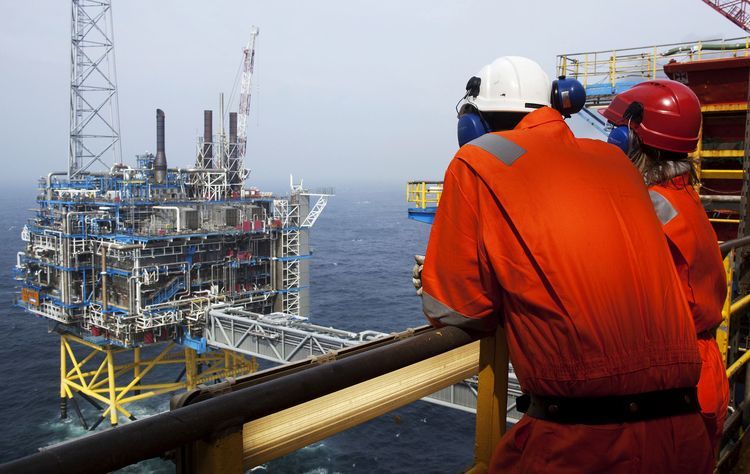
Oil producers in the North Sea were supposed to be among the first victims of OPEC’s battle for market share. Instead their high-cost, decades-old facilities are proving surprisingly resilient to the price slump.
Crude oil and condensate output is likely to continue rising in the U.K. North Sea until 2018 as projects that were sanctioned before crude’s plunge four years ago start up, according to estimates by industry consultant Wood Mackenzie Ltd. Even though production dips after that, output by the end of the decade will still be roughly equal to the 2015 level.
Since 2014, the Organization of Petroleum Exporting Countries has pumped without limits and allowed prices to plunge to 12-year lows to squeeze higher-cost rivals. While the strategy is expected to reduce non-OPEC output by 840,000 barrels a day this year, the battle is far from over. The unexpected stamina of areas like the North Sea, where operators have proved adept at keeping the taps open to keep cash flowing, is adding to the global glut and keeping prices lower for longer.
“Production has stayed resilient,” said Ian Thom, an Edinburgh-based senior research manager for U.K. upstream at Wood Mackenzie. “We saw a record number of dollars invested in the high-oil price environment,” and that is still delivering new production.
OPEC and the International Energy Agency have said they expect production from some countries to increase, deferring a return to balance in the market. OPEC, responsible for more than 40 percent of the world’s oil, said Sept. 12 it expects production from outside the group will grow by 200,000 barrels a day next year, raising it from an earlier projection of a drop of 150,000 a day.
A day later, the IEA said it estimates supplies outside OPEC will rise by 380,000 barrels a day, rebounding from a sharp decline this year. Coupled with slowing demand, increasing output will delay the rebalancing of the market until the second half of next year, the Paris-based agency said. Only last month it predicted a return to equilibrium this year.
“There are pockets of resilience across the world,” IEA’s Executive Director Fatih Birol said in an interview in London. “Some companies were able to bring costs down substantially and this provides some resilience.”
Production of crude and condensate, a type of light oil, will top 1 million barrels a day in the U.K. North Sea this year, about 8 percent higher than last year, according to Wood Mackenzie. Output will reach 1.07 million barrels a day in 2017 and 1.11 million the next year before falling to about 956,000 barrels at the end of the decade.
Post-Soviet High
When oil prices started their decline in the middle of 2014, some countries found it easier and cheaper to keep the fields running instead of shutting them now and starting again later. In Russia, production has been running at a post-Soviet high all year, Energy Ministry data show. The plunge in the ruble has reduced costs, offsetting the decline in oil prices.
In Norway, companies have brought down costs and become more efficient. Output in Western Europe’s biggest producer has exceeded 2015 levels in six of this year’s first seven months, according to the Norwegian Petroleum Directorate. Efficiency gains and new field start-ups have helped the country beat the government’s own forecasts.
In the U.S. Gulf of Mexico, output is projected to reach a record high in 2017, according to the Energy Information Administration. However, narrowing profit margins have forced many operators to pull back on future exploration spending, and they are putting fewer rigs to use, according to the agency.
Losing Steam
With oil’s downturn now running into its third year, companies’ and producing countries around the world are seeing their balance sheets getting weaker. Drillers have been cutting investments in exploration, contributing to a drop in discoveries to the lowest in seven decades. This will affect supply at some point in the future and, potentially, prices.
If oil prices continue to be low “the general trend is high-cost areas will lose steam sooner or later,” Birol said.
For now, operators in the U.K.’s North Sea are seeking to weather the price slump by cutting costs and even collaborating in ways they never thought possible. Earlier this year, some including Royal Dutch Shell Plc started pooling spare parts and tools, and are even sharing plans on how to drill wells so they can work faster and cheaper.
Companies are “working on cost efficiency reductions which seems to be going fairly well” in the North Sea, said Philipp Chladek, a senior industry analyst for Bloomberg Intelligence in London. “But without new investments in exploration, you will see the effects on production levels in three to five years.”
Recommended for you
